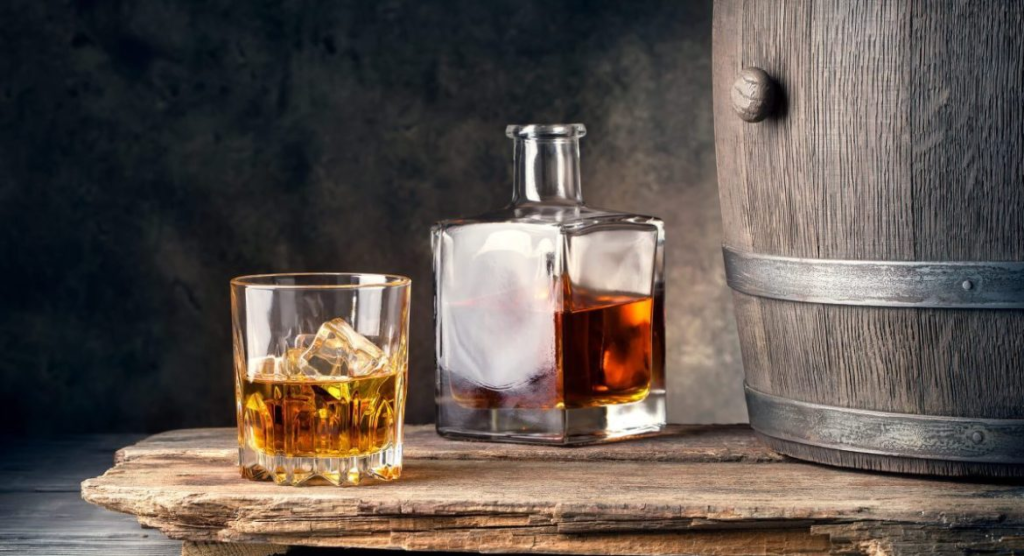Not only a drink, bourbon whiskey is a phenomenon with a rich cultural heritage in America. It’s important that you know the lingo used to describe this popular spirit as you set out to explore the world of bourbon.
This article seeks to lay out the jargon associated with bourbon whiskey by providing information on its subtleties, flavor characteristics, and manufacturing process. Whether you’re a seasoned enthusiast or a newcomer, unlocking the secrets of bourbon terminology will enhance your appreciation for this iconic American spirit.
Bourbon Basics: The Mash Bill Whiskey

Any bourbon’s foundation is its mash bill, a blend of grains that provides the taste foundation for the whiskey. The three main grains needed to make bourbon are barley, rye, and maize. The proportion of these grains in the mash bill affects how the whiskey tastes at the end. You’ll frequently find terms like “high-rye,” “high-corn,” or “wheated” to characterize the predominant grain in a certain bourbon. For example, a bourbon with a high rye content would taste more spicy, whilst one with a high corn content will probably taste sweeter.
Age Statement: The Influence of Time of Whiskey
The amount of years the spirit has spent aging in the barrel is indicated by the age declaration on a bottle of bourbon. Words like “straight bourbon” suggest that the spirit has at least four years of age on it. Longer maturation times are a feature of many premium bourbons, though, and they add to the taste profile’s complexity. The whiskey gains distinctive qualities like vanilla, caramel, and oakiness from absorbing and extracting flavors from the wood while it ages in charred oak barrels.
Single Barrel vs. Small Batch: Production Styles

Bourbon production methods can significantly impact the final product. Understanding terms like “single barrel” and “small batch” sheds light on the production process. Single barrel bourbons are bottled from a single cask, resulting in a unique and often more intense flavor. On the other hand, small batch bourbons are crafted by blending a select number of barrels, allowing distillers to create a balanced and consistent product. Exploring both styles can provide a diverse tasting experience.
Proof vs. ABV: Gauging Strength

The terms “proof” and “alcohol by volume” (ABV) are crucial when evaluating the strength of a bourbon. Proof is a measurement that is twice the ABV, and it helps consumers understand the whiskey’s potency. Bourbons can range from 80 proof (40% ABV) to over 140 proof (70% ABV). Higher proof bourbons often deliver a more robust and intense flavor, but they may require dilution or careful sipping.
Bottled in Bond: A Seal of Quality
“Bottled in Bond” is a designation that guarantees a bourbon’s authenticity and quality. To earn this label, the whiskey must be the product of a single distillation season, aged for at least four years, and bottled at exactly 100 proof. This classification, established by the Bottled-in-Bond Act of 1897, provides consumers with assurance regarding the whiskey’s origin and production standards.
Terroir: Embracing Regional Influences
Just like wine, bourbon can exhibit regional variations known as terroir. The climate, water source, and even the warehouse where the barrels mature can influence the final product. Terms like “Kentucky Straight Bourbon” highlight the importance of the region in bourbon production. Kentucky’s limestone-rich water and varying temperatures contribute to the unique character of bourbons produced in the state.
Master Distiller: The Artisan’s Touch
The master distiller is the creative force behind a bourbon’s production. Terms like “master distiller” and “master blender” refer to the skilled individuals responsible for crafting the whiskey’s flavor profile. Recognizing the names of renowned master distillers, such as Jimmy Russell or Fred Noe, can provide insights into the quality and tradition associated with a particular bourbon.
Tasting Notes: The Language of Flavor
When exploring bourbons, you’ll come across terms like “caramel,” “vanilla,” “spice,” and “oak” in tasting notes. These descriptors help convey the diverse flavor profiles found in different bourbons. A well-balanced bourbon might exhibit a combination of sweetness, spiciness, and complexity. Experimenting with various bourbons and paying attention to tasting notes can refine your palate and help you discover the nuances that make each bottle unique.
Best Bourbons Under $100: Balancing Quality and Affordability

As you delve into the world of bourbon, you’ll discover a vast range of options at various price points. The term best bourbon under $100 suggests a sweet spot where quality meets affordability. Some notable contenders in this category include Buffalo Trace, Eagle Rare, and Four Roses Single Barrel.These affordable bourbons have superb workmanship, nuanced tastes, and an enjoyable drinking experience.
Conclusion
Mastering the lingo of bourbon whiskey is essential to navigating its world, beyond simply consuming the spirit. From the mash bill to the master distiller, each term contributes to the rich tapestry of bourbon culture. As you explore the best bourbons under $100, remember that the true joy lies in the journey of discovery. Embrace the terminology, savor the flavors, and raise your glass to the timeless tradition of America’s favorite spirit.













Leave a Reply